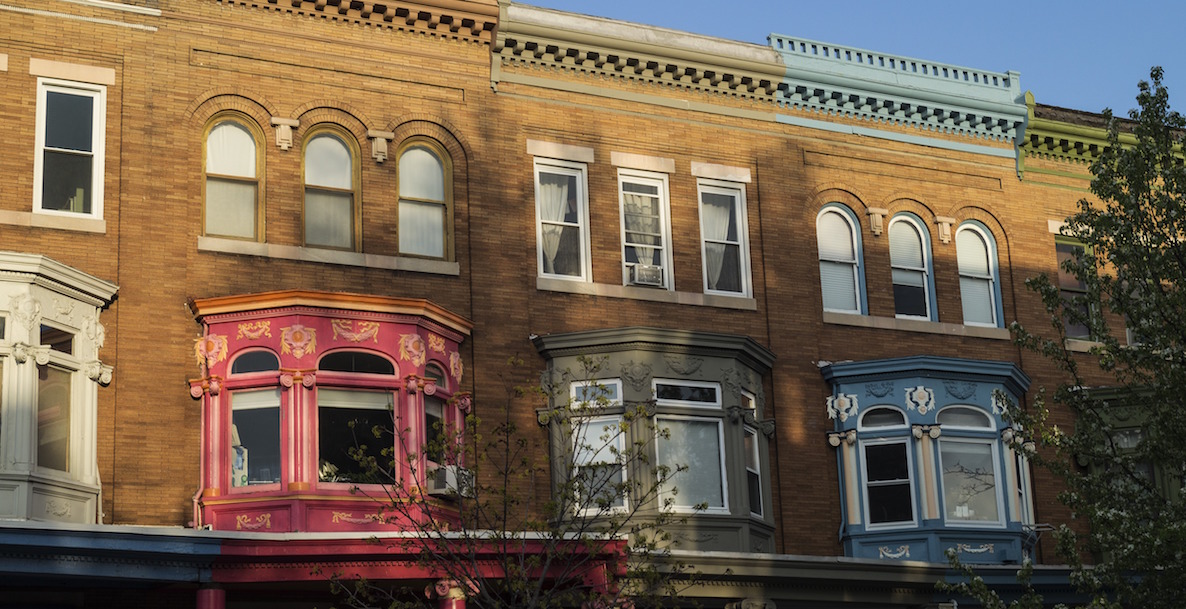Since early this year, when Mayor Kenney proposed a property tax increase to cover the School District’s $105 million deficit, the city’s 10-year tax abatement program has been under renewed scrutiny. And although City Council ultimately passed a budget with no new taxes, President Darrell Clarke has stated that he would like to “revisit” the abatement program in 2018. What might that mean for Philadelphia?
First, some background: In 2000, the City of Philadelphia enacted a generous real estate tax abatement program to spur new development in the city. The program essentially lets the value of any improvements to any real estate in Philadelphia to remain untaxed for 10 years following their completion.
Supporters of the abatement cite its success in helping to grow the city’s tax base by expanding the size and value of the city’s stock of real estate and attracting new, relatively affluent residents to occupy this new and improved housing. Critics of the abatement suggest that the city is granting an unnecessary and/ or excessive tax break to the development industry for which the long-term benefits of new development do not exceed the short-term costs of foregone property tax revenue.
Critical to determining the net cost-benefit of the abatement program is the issue of what has happened to abated properties (and their occupants) following the expiration of their abatement after 10 years. If the properties have held their value and their residents have remained in the city following the expiration of each property’s tax holiday, then this supports the view of the abatement as a temporary tax incentive for which the long-term benefits (expanded tax base) exceed the short-term costs (10 years of foregone tax revenue).
In the best case scenario, sellers of post-abated units remain in the city, the subsequent buyers of these units are new residents to the city and post-abated units hold their value. In the worst case scenario, sellers of post-abated units vacate the city, the next buyers of these units are already existing residents of the city and post-abated units experience significant drops in their value.
Conversely, if the units are liquidated at steep discounts and/or their former occupants vacate the city following the abatement’s expiration, this would support the view of the abatement as an unnecessary or excessively generous program which has a high short-term cost but fails to deliver on any substantial long-term benefits.
This is the first in a series of three articles, originally commissioned by Houwzer Real Estate, that will empirically examine what has happened to the sales volume, market value and tax revenue of formerly abated properties in Philadelphia. This piece will focus on the trend and level in the sales activity of these properties in their post-abatement period.
From 2000 to 2008, Philadelphia granted abatements to 10,404 properties that were single-family residences. As of February 2018, these 10,404 dwellings represent the entire population of residences that were previously abated under the program’s current form. The following chart shows the flow of abatements during this period:

As the chart indicates, the flow of abatements followed the course of the market cycle of that period, now recognized as the period of the U.S. housing bubble. Abatements—along with new construction and home sales—rose fairly steadily through the 2000s. Although it dipped in 2007 before hitting a new high in 2008, the spike in 2008 was due to the completion of many construction and conversion projects that began well before the market and economy turned.
To examine what has happened to these properties now that all of them have seen their abatements expire, these units were matched up to comprehensive sales data in the 2009 to 2018 period based upon their unique parcel IDs and assigned a sale year if they sold. It should be noted that all references to and analysis of “abated units” in the remainder of this piece refers only to units that were abated in the 2000- 2008 period and thus have since seen their abatements expire.
The following chart shows the annual sales volume of abated dwellings versus all residential dwellings in Philadelphia that were also purchased in the 2000-2008 period. The blue line represents the sales volume of those dwellings that received an abatement prior to 2009 but have since sold. The orange line represents the sales volume of all arms-length transactions of single family dwellings (houses + condos) in Philadelphia during the same period. Because abated dwellings represent only a small fraction of all dwellings in the city, sales of formerly abated units are shown on the left axis while all sales of all residential units are shown on the right axis.

In general, sales volume of both types of units follow the general macro-economy and housing cycle: they were low during the recessionary years of 2009 to 2011, and have since risen as both the economy and housing market have recovered. However, there are a few notable differences:
- Sales of abated units actually increased slightly during the 2009 to 2011 recession, while overall sales of housing units declined. Sales of previously abated units increased by 7.3 percent during this period, while citywide housing sales fell by 14.3 percent.
- Sales of previously abated units actually declined in 2017 (when nearly all these units were now no longer abated), while overall home sales increased. Sales of these previously abated units fell by nearly 14 percent last year while total home sales volume increased by nearly 17 percent. It should be noted that 2017 was the best year for home sales activity in Philadelphia since the previous recession.
But, while trends in comparative sales volume may be interesting, a more apples-to-apples comparison would be to compare the overall turnover rate in units abated in the 2000 to 2008 period to the turnover rate in all home sales during the same period. To do this, the total number of all arms-length home sales from 2000 through 2008 was computed from the home sales database, which was 194,755 transactions.
Then these sales were matched to all home sales that occurred in the subsequent 2009 to 2017 period, based upon each dwelling’s unique parcel number. Of the original 194,775 sales, 58,346 were identified as having subsequently transacted after 2008. The turnover rate of both types of units in each year was then computed as the number of sales in each year after 2008 divided by the total number of sales that occurred in the 2000-2008 period. The results are shown in the following chart:

The empirical results are as follows:
- The annual turnover rate of both previously abated units and all homes purchased during this period of analysis might seem rather low: ranging between 2.5 percent and just over 5 percent per year. However, the cumulative turnover rate over multiple years scales up to significant numbers:
- Of the total 10,404 housing units that were granted abatements in the 2000 to 2008 period, 3,530 have since subsequently sold; an aggregate turnover rate of 34 percent.
- This indicates that 66 percent of all abated properties in Philadelphia that have since seen their abatements expire currently remain occupied and/or owned by their original buyer.
- Of the total 192,296 sales of houses and condos that occurred in the 2000-2008 period, 58,346 have since subsequently sold; an aggregate turnover rate of 30 percent.
- This indicates that 70% of all dwellings purchased citywide between 2000 and 2008 currently remain occupied and/or owned by their original buyer.
- These numbers indicate that previously abated properties have experienced a higher turnover rate than all housing units purchased during that same period, but only by a slight margin4: 34% v. 30%, respectively.
- Trends in the turnover rate of abated v. all housing units are very similar to the trends in the raw number of sales of abated v. all housing units. The turnover rate of abated units remained steady during the recession, while overall housing turnover fell. Both recovered after 2011. But in 2017, the turnover of housing hit a new post-recession high while turnover of previously abated units actually declined.
What conclusions can be drawn from these numbers would seem to be limited, as well as contingent upon one’s own existing opinion of the abatement program:
At bare minimum, the numbers do at least indicate that there has been no major liquidation or “fire sale” of abated properties once their abatement has expired. A full two-thirds remain occupied by their original buyers, even years after the tax benefits of owning these units has elapsed. Moreover, this is also very close to the retention rate of all housing purchased in Philadelphia during the same period. And, of those previously abated units that have sold, there is every indication that they remain occupied and not abandoned.
![]()
It is empirically true that post-abated properties have had a higher turnover rate than overall housing in general: 34 percent v. 30 percent. However, whether a turnover rate of 34 percent or the 4 percentage point difference could be considered meaningfully “large” likely depends upon one’s view of the abatement.
To the program’s critics, this can be taken as evidence that a significant percentage of investors in these properties are doing so primarily for the tax benefit, and they are disinvesting in these assets once the tax benefit of owning them is terminated. To the program’s advocates, this 4 percentage point difference would likely not be considered large enough to be of concern. Moreover, the slightly greater “churn” in abated units also delivers fiscal benefits to the city in the form of more transfer tax revenue.
![]()
While previously abated units may have a higher turnover rate than housing in Philadelphia as a whole, whether this is good or bad is heavily dependent upon three factors: whether or not the previous owner- occupant of an abated unit stays in the city or leaves, whether the subsequent buyer of the post-abated unit is a new resident to the city or an existing one and whether or not the expiration of the abatement has significantly reduced the value of the unit.
In the best case scenario, sellers of post-abated units remain in the city, the subsequent buyers of these units are new residents to the city and post-abated units hold their value. This maximizes the fiscal benefits of the program in the form of additional wage, sales and real estate tax revenues. In the worst case scenario, sellers of post-abated units vacate the city, the next buyers of these units are already existing residents of the city and post-abated units experience significant drops in their value. This would result in a significant loss in city revenue relative to the initial benefits generated by the abatement program, and would likely provide meaningful evidence that the benefits of the program are relatively small compared to its costs.
In reality, of course, the truth almost certainly lies somewhere in between these two extreme scenarios. While it is very difficult to discern the short-term migration patterns of individual buyers and sellers (since information on their previous and ensuing residences is not available), it is possible to discover what has happened to the value of abated properties in their post-abatement period. The next article in this series will examine exactly that.
Kevin Gillen, PhD, is the senior economic advisor at Houwzer, a Philly-based real estate agency. He is also a senior research fellow at the Lindy Institute for Urban Innovation at Drexel University.
Photo via Pxhere






